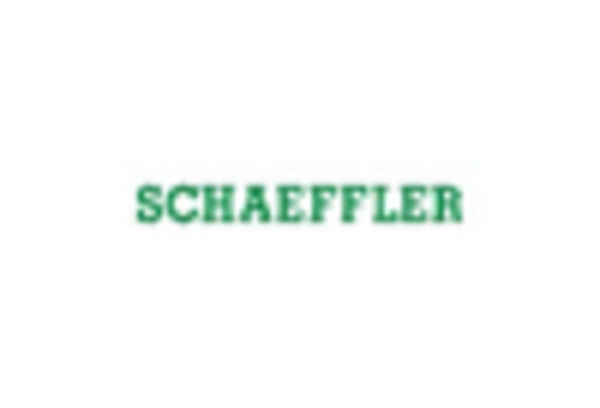Focus on Energy Efficiency
The Ball Screw Market is increasingly shaped by a growing focus on energy efficiency across various sectors. As industries strive to reduce energy consumption and minimize environmental impact, the demand for high-performance components like ball screws is likely to rise. Ball screws are known for their ability to convert rotary motion into linear motion with minimal energy loss, making them an attractive option for energy-conscious manufacturers. This trend is expected to drive innovation in ball screw design and application, potentially leading to new market opportunities as companies seek to enhance their sustainability efforts.
Growth in Electric Vehicles
The Ball Screw Market is poised to benefit from the rapid expansion of the electric vehicle (EV) sector. As manufacturers strive to enhance vehicle performance and efficiency, ball screws are increasingly utilized in various applications, including steering systems and powertrain components. The electric vehicle market is anticipated to witness a growth rate exceeding 20% annually, which could significantly impact the demand for ball screws. This trend suggests that as more automotive companies pivot towards electric mobility, the reliance on high-precision components like ball screws will likely intensify, thereby bolstering the market.
Rising Demand in Automation
The Ball Screw Market is experiencing a notable surge in demand due to the increasing adoption of automation across various sectors. Industries such as manufacturing, aerospace, and robotics are increasingly relying on ball screws for their precision and efficiency. According to recent data, the automation sector is projected to grow at a compound annual growth rate of approximately 9% over the next five years. This growth is likely to drive the demand for ball screws, as they are integral components in automated machinery. The need for enhanced productivity and reduced operational costs further propels the adoption of ball screws, making them a critical element in the evolving landscape of industrial automation.
Increased Investment in Infrastructure
The Ball Screw Market is likely to benefit from increased investments in infrastructure development. Governments and private entities are allocating substantial resources towards building and upgrading transportation systems, energy facilities, and industrial parks. This trend is expected to create a heightened demand for machinery and equipment that utilize ball screws, as they are essential for ensuring precision in construction and manufacturing processes. The infrastructure sector is projected to grow at a steady pace, which may lead to a corresponding rise in the consumption of ball screws, thereby positively impacting the market.
Advancements in Manufacturing Technologies
The Ball Screw Market is significantly influenced by advancements in manufacturing technologies. Innovations such as additive manufacturing and advanced machining techniques are enhancing the production capabilities of ball screws, allowing for greater precision and customization. These technological improvements are expected to lead to a reduction in production costs and an increase in the availability of high-quality ball screws. As manufacturers adopt these new technologies, the market is likely to see a shift towards more efficient and cost-effective solutions, which could further stimulate demand in various applications, including CNC machines and industrial equipment.


















Leave a Comment